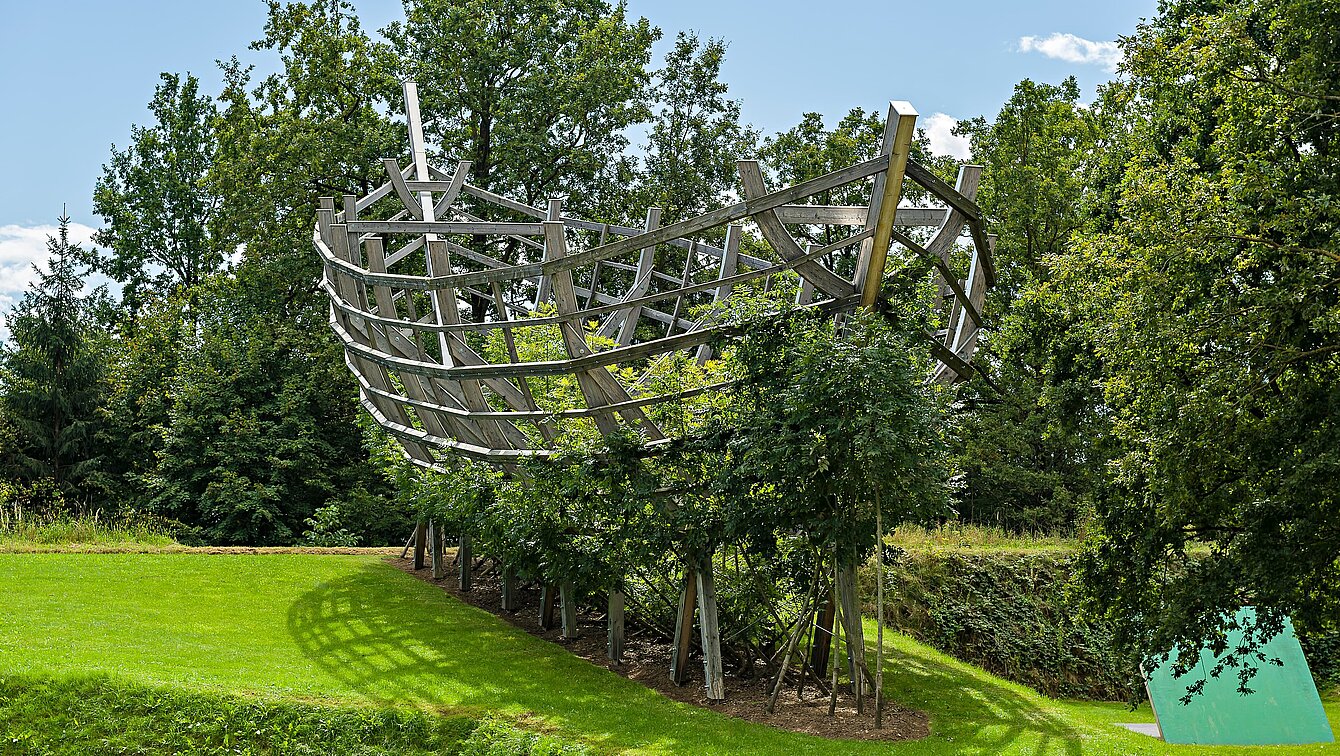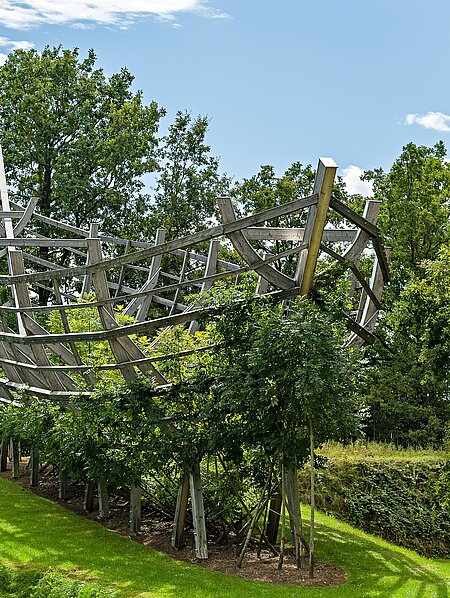The wooden skeleton of a ship’s hull of about 25 metres in length serves as a support for 60 growing ash trees. Like landscape gardener Arthur Wiechula’s growing houses, the trees here are intended to form a distinct, dense body by growing together over the years. Whereas normally trees would simply be felled to build arks, here patience must be exercised while the trees gradually form an ark over time. An interdisciplinary link is created, spanning from landscape architecture and biology to art and architecture. In 2024, the wooden structure was removed as planned, resulting in a ship's hull made of living trees.
Arche aus lebenden Bäumen
Mario Terzic, 1998/2010-2011/2024


Image Credits
Author
Elisabeth Fiedler
Location on map
Position 64
Owner
Universalmuseum Joanneum
Artist biography
Mario Terzic
Show all
About the sculpture
Artist and landscape designer Mario Terzic was born in 1945 in Feldkirch and, since the 1970s, has spent a great deal of time working on garden projects and public space design. He managed the internationally renowned Trinidad Project from 1998 until 2003.
In the context of this project he developed landscape artwork concepts together with Norbert Bacher and Karl Födermair. In this he largely focused on historical gardens, designing puzzling and challenging concepts for reviving these artificial parks and to help them be perceived and understood through new artistic interpretation. In this period he would learn that landscape parks could only be freed from their static monumental status by means of artistic intervention. Since 1991 he has been teaching at the University for applied art in Vienna; in 2000 he founded the Institute for landscape design.
The Austrian sculpture park, designed by Swiss landscape architect Dieter Kienast, houses more than 60 Austrian and international sculptures and does not require any landscape design. Classic materials such as wood, stone, iron or bronze meet here with glass, concrete, plastic, scrap or textile materials within the context of art. This also helps to improve the understanding of sculptural development. Numerous sculptures interpret the surrounding space or interact with the onlooker.
ARCHE / ARK by Mario Terzic represents a sculpture which on the one hand grows into the park’s constructed nature, thus being included in the year’s cycle, and at the same time is clearly visible as an artistic intervention of 20 metres in length. The unique combination of art and nature, the mutual interdependence between climate conditions and human design, the changeability in “grown” time are some of the components that have paramount importance in this work by Mario Terzic.
The Arche / ark will not enter the Austrian Sculpture park as a finished structure, but – in a completely different understanding of sculpture in the exterior space – will rather address both future focal topics of mankind and yearnings, such as: Weather, climate, external conditions and growth, development or transitoriness, topics we continuously encounter become both visible and things we can experience in this sculpture.
Thus this enormous ship is created from its own basic material, timber, whilst we are irritated by the reversal of common procedures: Trees are not felled to be taken away for the construction of a ship to sail the oceans, but are planted and taken care of to make sure they grow into a ship.
Hence the ship remains deeply rooted and anchored in comprehensible development and ageing and reinterprets the surrounding lawn as a field of liquid movements. In addition to the long tradition of the meaning of the ship, conveying departure, curiosity, adventure and parting or failure - here art appears as ARCHE / ARK, as the only instrument guaranteeing survival.


















